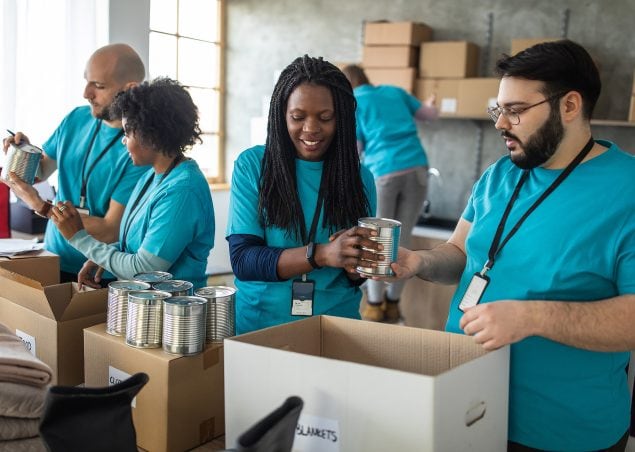What Organizations and Communities Can Do to Promote Social Connectedness
Social connectedness is one of the fundamental social determinants of health. It can be addressed through policy, systems, and environmental change approaches that can become incorporated into the structures in which we live, work, worship, learn, and play.
The availability of public transportation, public parks, and community-based organizations play a role in the ability to connect with others. Some people may not have equitable access to resources and opportunities due to unfair policies, practices, and conditions and differential treatment because of personal or individual factors. These factors include but are not limited to race and ethnicity, sexual orientation, gender identity, age, physical abilities, geographic location, educational background, and economic status.

Public health, health care, and social service organizations can encourage/foster/increase social connection within a community through public education, evidence-based programs and services, research, and the promotion of healthy lifestyles.
National partnerships and coalitions have developed in response to the increased recognition of the health impacts of social isolation and loneliness, such as the Campaign to End Loneliness, Commit to Connect, and the AARP Foundation’s Connect2Affect. Local agencies and non-profit organizations are also getting involved in helping to create environments that foster social connectedness. Such agencies include social service providers, healthcare organizations, nursing homes, assisted living communities, doctors’ offices, businesses and worksites, grocery stores, community groups, and more.
Lawmakers have called for resources to support initiatives for increasing social connectedness. In fact, other countries have designated ministers of loneliness to lead national campaigns for addressing social isolation and its impacts.
The US Surgeon General issued an Advisory on the Healing Effects of Social Connection and Community. It details the impact of loneliness on health outcomes and outlines a strategy to strengthen our relationships and society. Learn more about how you can help your community flourish: surgeongeneral.gov/connect2heal
Measurement, Prevention, and Interventions for Social Connectedness
While there is currently much evidence of the significant impacts of connection on health and well-being, more research needs to be done on measurement, prevention, and interventions for social connectedness. This will require public health surveillance at the national level, funding support, and cross-sector collaboration.
The nation’s health care systems can prioritize social connection as a major health issue, and many health care organizations and associations have already become involved in screening for social factors that impact health, including social support. In fact, there are medical codes for loneliness, social isolation, and inadequate social support that can be used for documentation in a patient’s medical records. Some psychiatrists even compare social connection to vitamins in that we need a dose of positive contact with people each day.1
Below is a list of promising approaches that individuals and organizations can use to reduce loneliness and promote more frequent, high-quality relationships among the individuals they serve.2-9
| INTERVENTIONS | DESCRIPTION | EXAMPLES |
|---|---|---|
| Psychological therapies | Psychological interventions that target skills to increase quality social connections. |
|
| Community-based exercise and physical activity | Exercise or leisure activities combined with exercise that are conducted by programs in communities. | Exercise programs designed for seniors or specific groups like: |
| Technology and phone-based programs | Many different technologies have been used to reduce social isolation and loneliness, especially in older adults. Phone-based programs can be used to connect older adults to training volunteers. Information and communication technologies include smartphones, specialized apps, web-based sites, social media, videoconferences, voice-activated virtual assistants. |
|
| Health education, skill development, support groups, and peer support | Health education and awareness programs that promote social connectedness and support or offer suicide prevention strategies.
Provider education and training for screening and referrals for patients experiencing social isolation and loneliness. Social skills training and conflict resolution classes can improve interpersonal communication skills and build relationships. Peer delivered services and support groups can provide affordable options. |
|
| School connectedness | Increasing school connectedness and the feeling of belonging and engagement within the school community can have positive effects on student outcomes. This includes school programs and activities that increase social and emotional competencies, foster effective communication, and teach skills to build positive relationships. |
|
| Intergenerational programs | Programs that increase intergenerational connections, such as those that support the development and maintenance of relationships between youth and older adults. |
|
| Animal-based interventions | Human-animal interaction reflects a broad range of activities that include relationships and interactions between animals and humans.
|
|
| Built environment | The built environment is one of the key social determinants of health and refers to human-made surroundings that influence people’s behaviors and drive community health. |
|